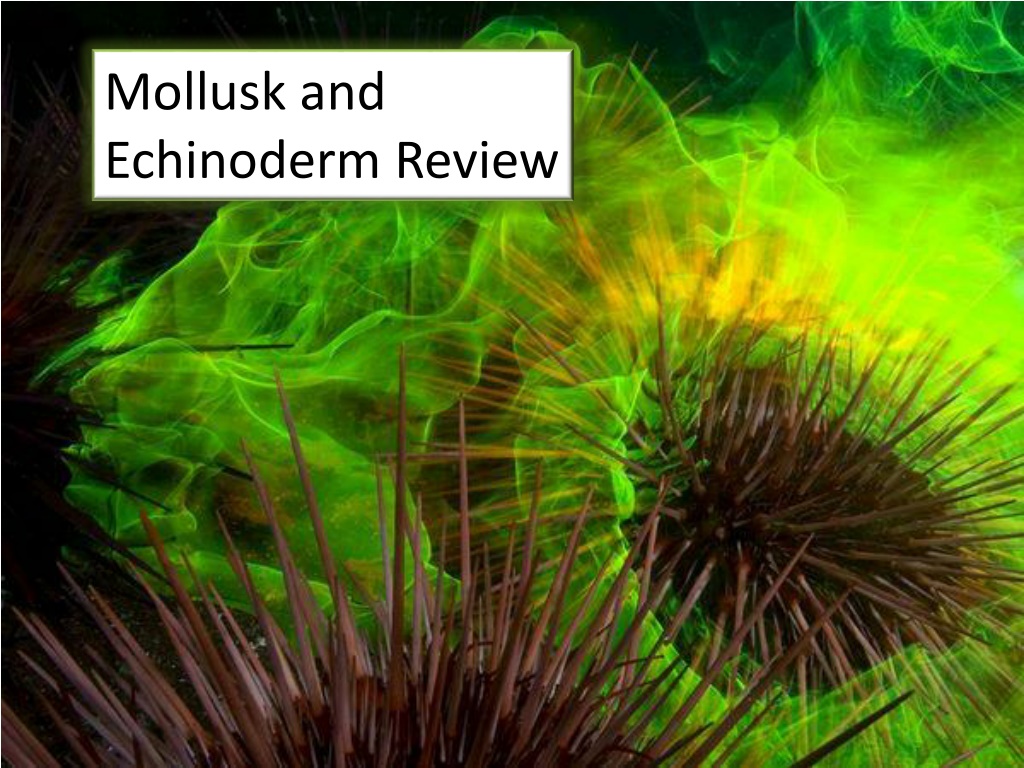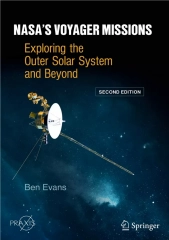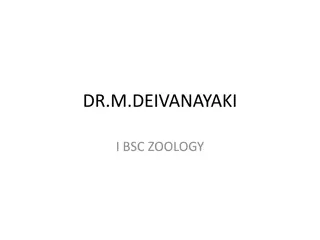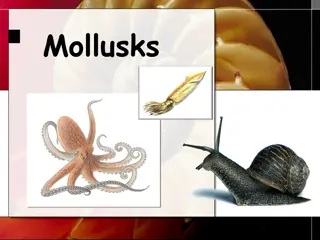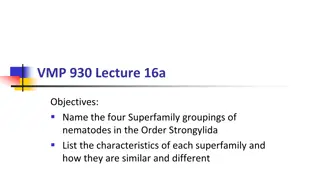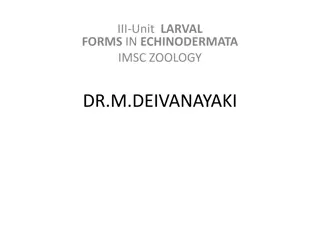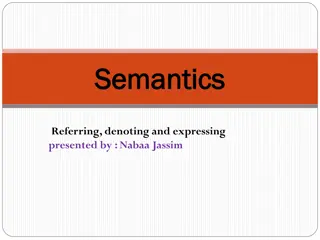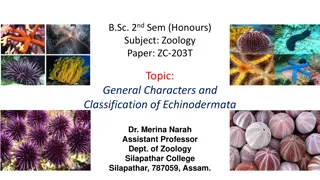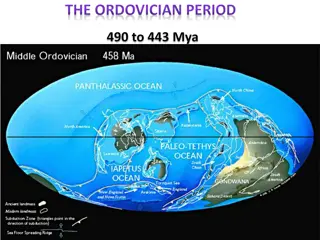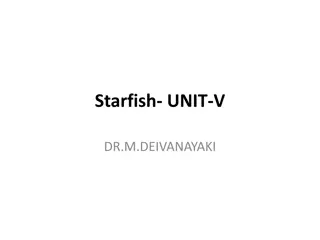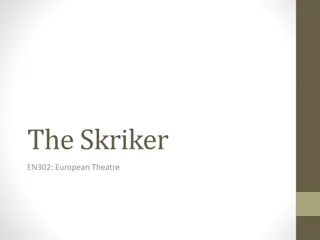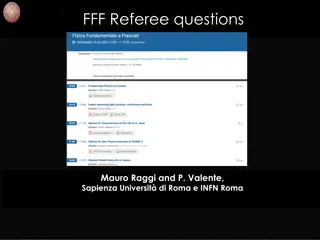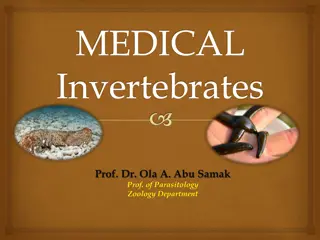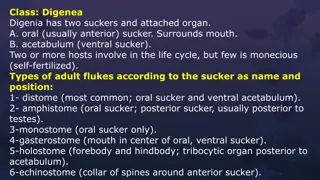Exploring Mollusks and Echinoderms
Delve into the fascinating world of Mollusks and Echinoderms through this informative review. Learn about their unique characteristics such as radula, tube feet, gills, and bilateral symmetry. Discover the importance of these features in the diverse phyla of Mollusca and Echinodermata, including their internal skeleton, water-filled tubes, and protective shells. Explore the different structures like tube feet and gills that enable these marine animals to thrive in their environments.
Download Presentation

Please find below an Image/Link to download the presentation.
The content on the website is provided AS IS for your information and personal use only. It may not be sold, licensed, or shared on other websites without obtaining consent from the author. Download presentation by click this link. If you encounter any issues during the download, it is possible that the publisher has removed the file from their server.
E N D
Presentation Transcript
Mollusk and Echinoderm Review
Word Bank Mollusca Echinodermata radula tube feet gills bilateral The flexible ribbon of many tiny teeth used by snails and slugs to tear and scrape up food radula
Word Bank Mollusca Echinodermata radula tube feet gills bilateral type of symmetry found in Phylum Mollusca bilateral
Word Bank Mollusca Echinodermata radula tube feet gills bilateral The phylum of animals with an internal skeleton and system of water-filled tubes Echinodermata
Word Bank Mollusca Echinodermata radula tube feet gills bilateral The organ of mollusks used to obtain oxygen and get rid of carbon dioxide gills
Word Bank Mollusca Echinodermata radula tube feet gills bilateral The phylum that contains animals with soft bodies often covered by a protective shell Mollusca
Word Bank Mollusca Echinodermata radula tube feet gills bilateral Structures lining the underside of the arms of sea stars; act like tiny suction cups tube feet
Word Bank Sea cucumbers brittle stars endoskeleton mantle spiny gastropods water vascular system foot The ___________ are a group of mollusks that may be herbivores, carnivores or scavengers. gastropods
Word Bank Sea cucumbers brittle stars endoskeleton mantle spiny gastropods water vascular system foot Echinoderms have a bumpy texture due to hardened plates under the skin called _______ . endoskeleton
Word Bank Sea cucumbers brittle stars endoskeleton mantle spiny gastropods water vascular system foot The ____________ are echinoderms with elongated bodies, leathery skin and retractable tentacles. Sea cucumbers
Word Bank Sea cucumbers brittle stars endoskeleton mantle spiny gastropods water vascular system foot Mollusks have an organ called a(n) _________ that can be used for digging, movement or catching prey. foot
Word Bank Sea cucumbers brittle stars endoskeleton mantle spiny gastropods water vascular system foot Echinoderm refers to animals that have _________ skin. spiny
Word Bank Sea cucumbers brittle stars endoskeleton mantle spiny gastropods water vascular system foot The ____________ consists of fluid filled tubes within the bodies of echinoderms. water vascular system
Word Bank Sea cucumbers brittle stars endoskeleton mantle spiny gastropods water vascular system foot A layer of tissue found in mollusks that surrounds the internal organs and may produce a shell is called the __________ . mantle
Word Bank Sea cucumbers brittle stars endoskeleton mantle spiny gastropods water vascular system foot The ___________ are a group of echinoderms that move by wriggling long, slender arms with flexible joints. brittle stars
Match the organism to its correct class or phylum Gastropod Bivalve Cephalopod Echinoderm Sea slug Gastropod
Match the organism to its correct class or phylum Gastropod Bivalve Cephalopod Echinoderm Scallop Bivalve
Match the organism to its correct class or phylum Gastropod Bivalve Cephalopod Echinoderm Snail Gastropod
Match the organism to its correct class or phylum Gastropod Bivalve Cephalopod Echinoderm Sea Urchin Echinoderm
Match the organism to its correct class or phylum Gastropod Bivalve Cephalopod Echinoderm Nautilus Cephalopod
Match the organism to its correct class or phylum Gastropod Bivalve Cephalopod Echinoderm Sea Star Echinoderm
Match the organism to its correct class or phylum Gastropod Bivalve Cephalopod Echinoderm Octopus Cephalopod
Do you know the steps of how a sea star eats a clam??
What is the difference between a closed circulatory system and an open circulatory system?
